About the Exhibition
A Lapse into the Ephemeral is a group exhibition of storytelling and new media featuring artworks from artists/artistic collectives working internationally with 3D scanning technologies to preserve the ephemeral. Artists: shrin anlen (USA) Clement Valla (US) Benjamin Busch (Germany) and Sadia
Sharmin (Bangladesh/Sweden) Oddviz (Turkey) Formafantasma (Italy/Netherlands)
Press
Mike Curran, "Splintering the Veneer of the City. Two exhibitions that excavate the feel of a place beneath its smooth surface, and shift what spaces are worthy of attention and care".
Read the full review on Mnartists.walkerartcenter.org
Curatorial Statement
A Lapse into the Ephemeral is a group exhibition of storytelling and new media featuring artworks from artists/artistic collectives working internationally with 3D scanning technologies to preserve the ephemeral.
The concept of ephemerality is bound to our participation in the natural cycle of life, the passage of seasons and ultimately our mortality. Thinkers and artists across geography and history have explored this idea and their discoveries have influenced languages and cultures.
In Buddhism (1) , impermanence is one of three marks of existence that regulates the life of all beings; according to Plato’s Theaetetus (2) the universal flux of things was at the center research for Ancient Greek philosophers Hearclitus that stated “τὰ πάντα ῥεῖ καὶ οὐδὲν μένει” (ta panta rhei kai ouden menei) “everything flows, and nothing stays”; in Medieval times, the word ephemeral was used to qualify events that lasted for a day, such as a passing fever or short-lived insects (3).
While philosophies and religions embraced the ephemeral, western art seems to be systematically and fearfully opposing it. There is a tendency to create architecture and sculptures that survive through the millennia: renaissance churches, triumphal arch, confederate monuments among others. In opposition, ephemerality is embraced by counter-cultures aiming to break from the classical practice of collection and preservation which is ultimately the basis for modern museology. In the early 1900, Futurism, an italian artistic and social movement, contested that art should no longer aim to be immutable but rather “practical” (4) and “ephemeral” to better reflect the values of an interconnected and fast modern society. In the ‘50 and ‘60, in tandem with societal changes in the traditional family structure, work culture and gender roles, the avant-garde movements working with performance, sound art and happenings expanded our conception of what art can be: shifting away from conceiving the artwork as an object, a collectible, art can become a concept-based experience, a moment, a lapse into the artist’s process and identity.
How do we define ephemerality today? And what is the role of art in capturing it? Thanks to digital technology we can record, store and share information and data to access at any given minute, having access to potentially infinite/everlasting archives. Simultaneously, these are uncertain times: the life of entire communities can abruptly be impacted by unexpected environmental factors, growing social tensions, and world epidemics.
Since the dichotomy between permanent and ephemeral is a constant in our everyday life and goes hand in hand with technological progress, we invited artists with various cultural backgrounds to collectively reflect on what is the role and media of preservation today, starting from the questions: how do we build an archive and what is worth preserving? The artists in this exhibition engage with advanced digital 3D scanning techniques to document and archive, pushing the boundaries of what these technologies can do beyond their standard commercial uses. These technologies are yet not largely available as they are still being developed by corporations.
The artists have pioneered new ways of using them, creating innovative aesthetics and meaningful relationships between their media and the subject. All the artworks presented in this exhibition record elements and experiences that are associated with counterculture, social engagement and to some extent, subversive thinking, prioritizing narratives that are overlooked and marginalized.
The collaborative duo Benjamin Busch (US/Germany) and Sadia Sharmin (Bangladesh/Sweden) document through audio-video interviews and photogrammetry (5) the grassroot cultural hub Shaheed Rumi Memorial Library, which is situated in the self-organized settlement Karail Basti in Dhaka in Bangladesh. Both trained as architects, Busch and Sharmin conceive the use of mapping (2D, 3D, and storytelling) as tools for activism, empowerment and community building. In the two-channels video installation Amader Pathagar (A Library of Our Own), 2021, the artists aim to preserve perhaps the most ephemeral things: culture and relationships. As art reflects life, it provides new approaches to current issues.
In the single-channel video Quercus, 2020, the design studio Formafantasma (Italy/Netherlands) repurposes a technology, used by the timber industry to log trees precisely and efficiently, to create a sense of empathy and closeness with the trees of an oak forest in Virginia. Widely used in cartography and archaeology, Lidar employs lasers to scan large surface areas. Along with abstract and evocative visuals, the artwork suggests new ways of re-thinking our relationships with trees from an historical, environmentally sustainable, and caring perspective.
Tzina: symphony Of longing, 2017, by creative technologist shirin anlen (USA), is a webVR platform presented in this exhibition as a four-channel video installation. This artwork is experimental in the use of the technology: volumetric filmmaking, photogrammetry, 3D animation and 3D modeling are purposefully mixed in Tzina to pose a quest for intimacy within the digital. Intimacy originates from feeling close to someone or something, accepting imperfections, relinquishing any judgments. anlen does not aim to seamlessly replicate reality, instead she embraces the glitchy aesthetic derived from the limitations of working outdoors with a not yet fully developed technology. She does this while seeking to have momentary meaningful connections with the square-goers, who openly share about their losses and sorrows. As the artist writes in an article published online on January 30, 2017: “It surprised me to discover how much comfort I found in a familiar public space, surrounded by strangers that somehow shared my fate. This is an element that I felt was critical for Tzina to work. The comfort in shared loneliness” (6). Tzina: symphony Of longing is a fragmented archive, or a modernist portrait of a place in Tel Aviv that no longer exists; in January 2017 the square was demolished.
Openly rejecting permanent preservation as a value, in favor of appropriation, the Turkish collective Oddviz celebrates the ephemeral nature of public space. Through photogrammetry they 3D scan existing objects that then are used to create new fictional urban environments. The ongoing series Inventory is composed of videos, prints and 3D models representing distinguishing elements from several international cities: street furniture, surfaces with graffiti, monuments with a controversial history, and other items that are generally overlooked. In the tradition of counter-culture, Inventory becomes an anti-monumental archive of the living and the momentary.
Ongoing is also the archive created by artist Clement Valla (USA) who extensively uses 3D scanning and printing techniques in his practice. In this exhibition he presents a project that does not directly employ these techniques, but rather comments on its most widely known application: Google Earth. In Postcards from Google Earth, 2010 - ongoing, and Postcard from Google Earth (36.01417°,-114.74073°), 2023, the artist exposes the database nature of the well-known mapping software against its pretense of absolute realism. The software creates a fictional landscape from data and not from observation. Meticulously, the artist collected and archived screenshots of what appear to be anomalies or glitches: melting highways, stretching bridges, and weird-looking clouds, destined to disappear once the data updates. As Valla writes: “I call these images postcards to cast myself as a tourist in the temporal and virtual space - a space that exists digitally for a moment, and may perhaps never be reconstituted again by any computer” (7).
An exhibition, by nature, deals with the ephemeral: it is a momentary gathering, a series of conversations inspired by proximity of different aesthetics, symbols and concepts. While you walk through this display of archived activism, preservation of life from within, records of loss and regrets, monumentalization of vandalism, and salvation of glitch, we hope you can grasp something that is together unique to your experience, and related to a deeper sense of history, culture and humanity.
NOTES:
1. Sharma, Arvind. 1980. “Anicca”. Buddhist Studies Review 4 (1-2):16-23. https://doi.org/10.1558/bsrv.v4i1-2.13895.
2. Bostock, D., 1988, “Plato’s Theaetetus”, Oxford: Oxford University Press.
3.. We are referring here to the Medieval Latin term ephemera (febris): "(fever) lasting a day".
4. We have lost our predilection for the monumental, the heavy, the static, and we have enriched our sensibility with a taste for the light, the practical, the ephemeral and the swift. We no longer feel ourselves to be the men of the cathedrals, the palaces and the podiums. We are the men of the great hotels, the railway stations, the immense streets, colossal ports, covered markets, luminous arcades, straight roads and beneficial demolitions. Excerpt from: Sant'Elia, Antonio. 1914. “Manifesto of Futurist Architecture”, Lacerba.
5. According to Wolf, P.R. and Dewitt, B.A. 2000. Elements of Photogrammetry with Applications in GIS. 3rd Edition. “Photogrammetry is the art, science, and technology of obtaining reliable information about physical objects and the environment through processes of recording, measuring, and interpreting photographic images and patterns of recorded radiant electromagnetic energy and other phenomena.” “Photogrammetry is primarily concerned with making precise measurements of three-dimensional objects and terrain features from two-dimensional photographs.” This technology is commonly used to create real estate virtual tours and topographical maps from aerial photos.
6. Anlen, shirin. “Symphony of Conclusions. Sequence of thoughts on volumetric interactive webVR during TZINA: symphony of longing. Get lost with me, I think I’m getting somewhere.” Published online on January 30, 2017. https://medium.com/volumetric-filmmaking/symphony-of-conclusions-56b907bb6fd5x of techniques used by the artist
7. Valla, Clement. “The Universal Texture”. Published online on July 31, 2012, Rhizome. https://rhizome.org/editorial/2012/jul/31/universal-texture

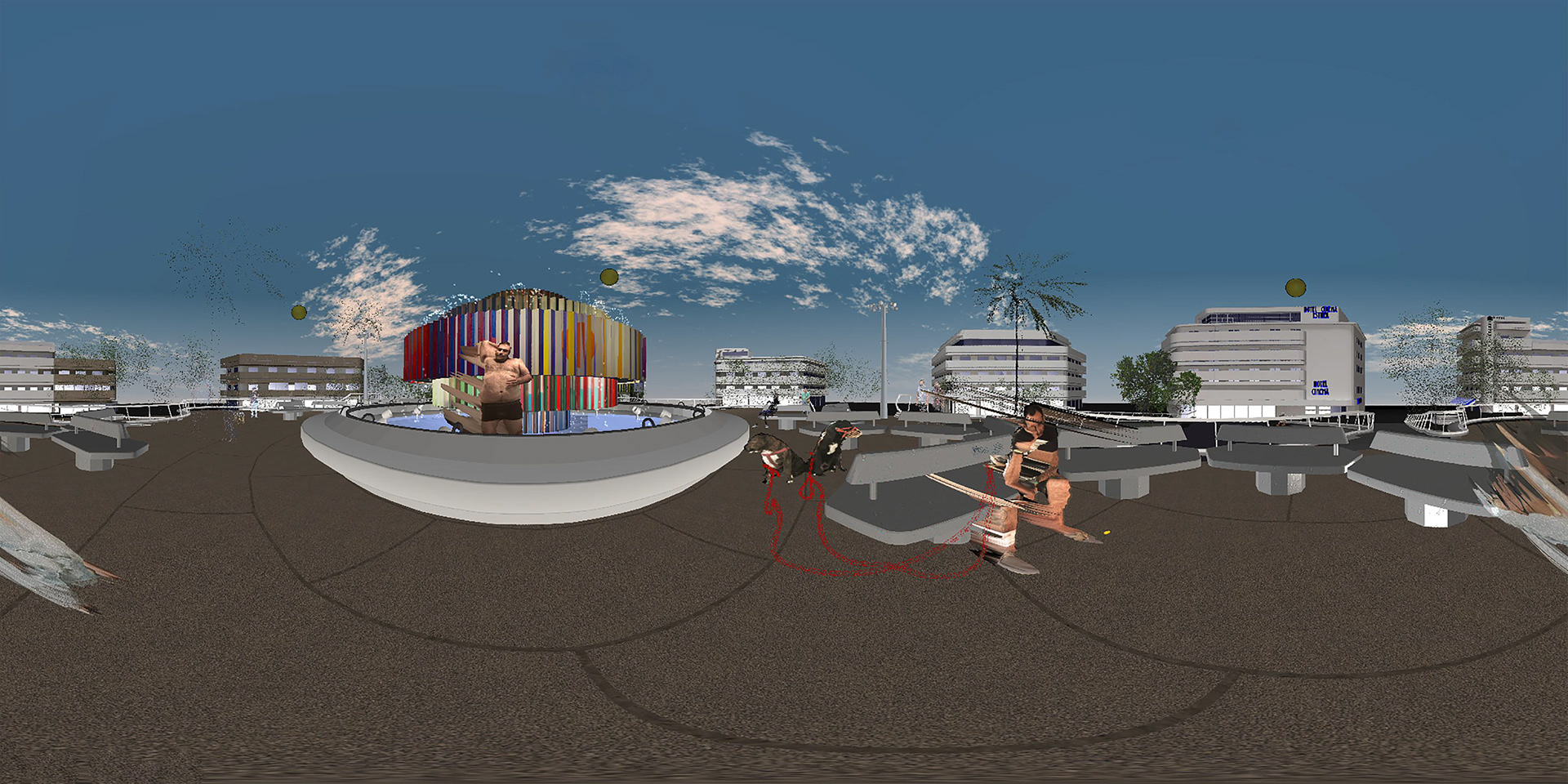



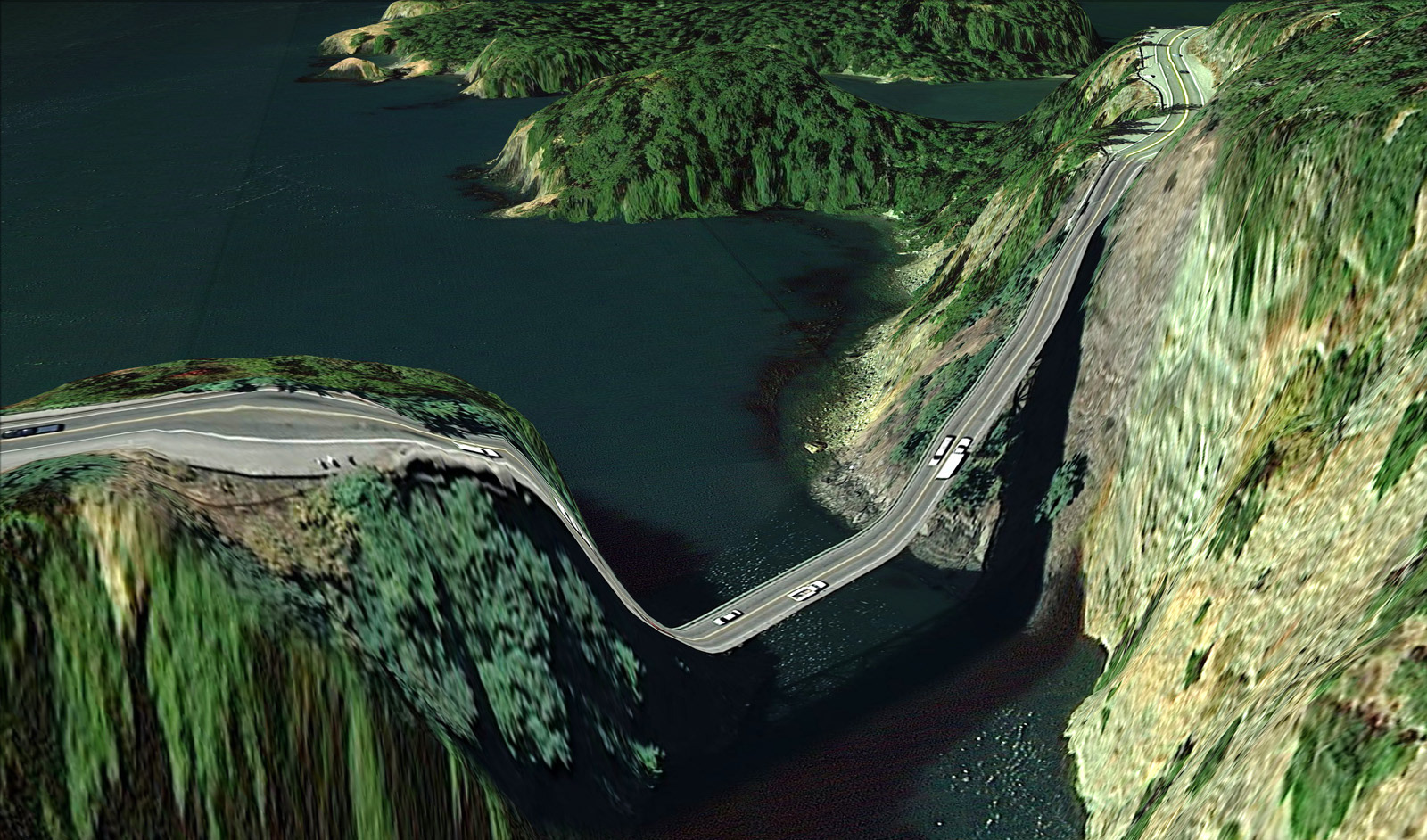
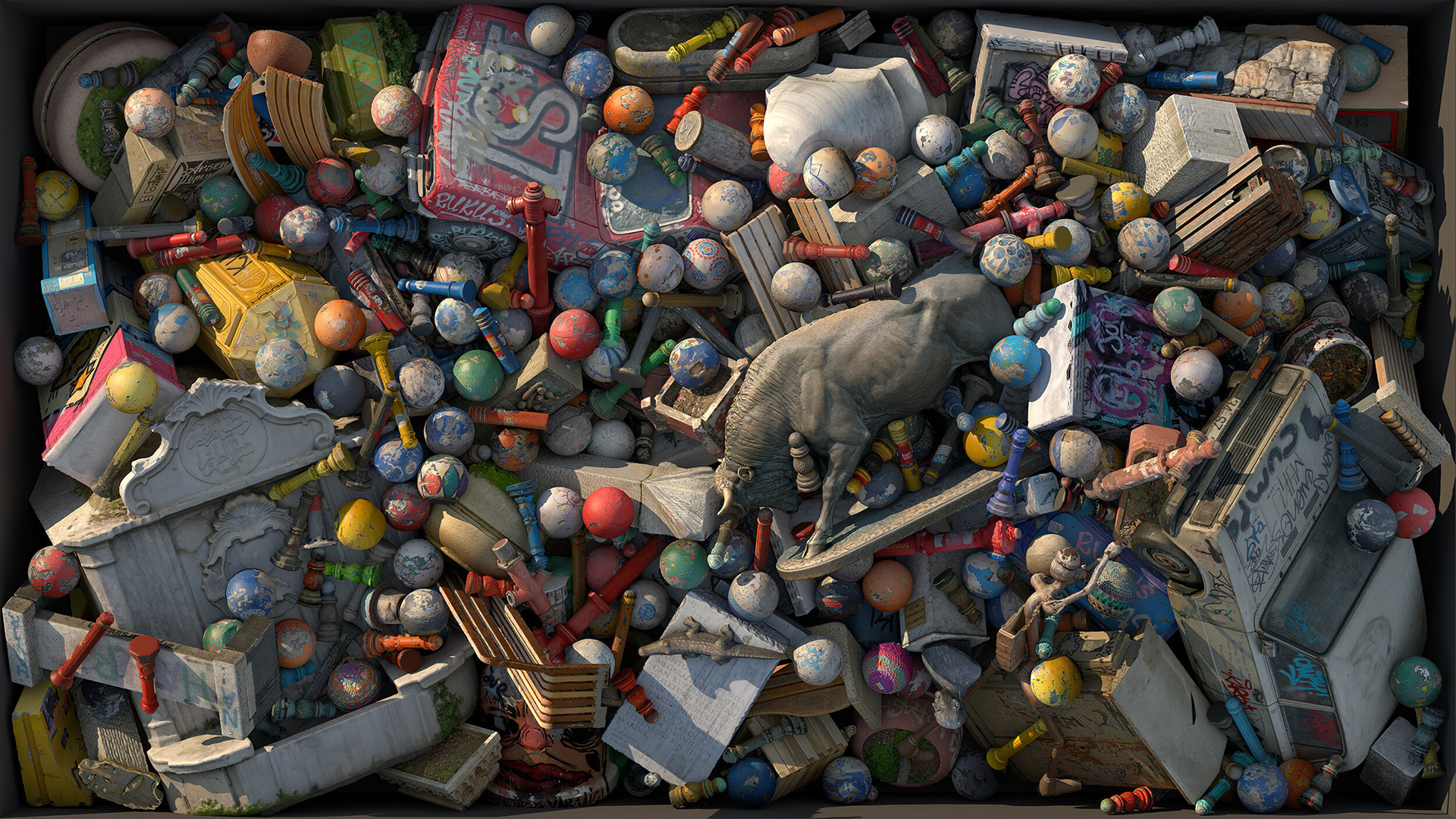
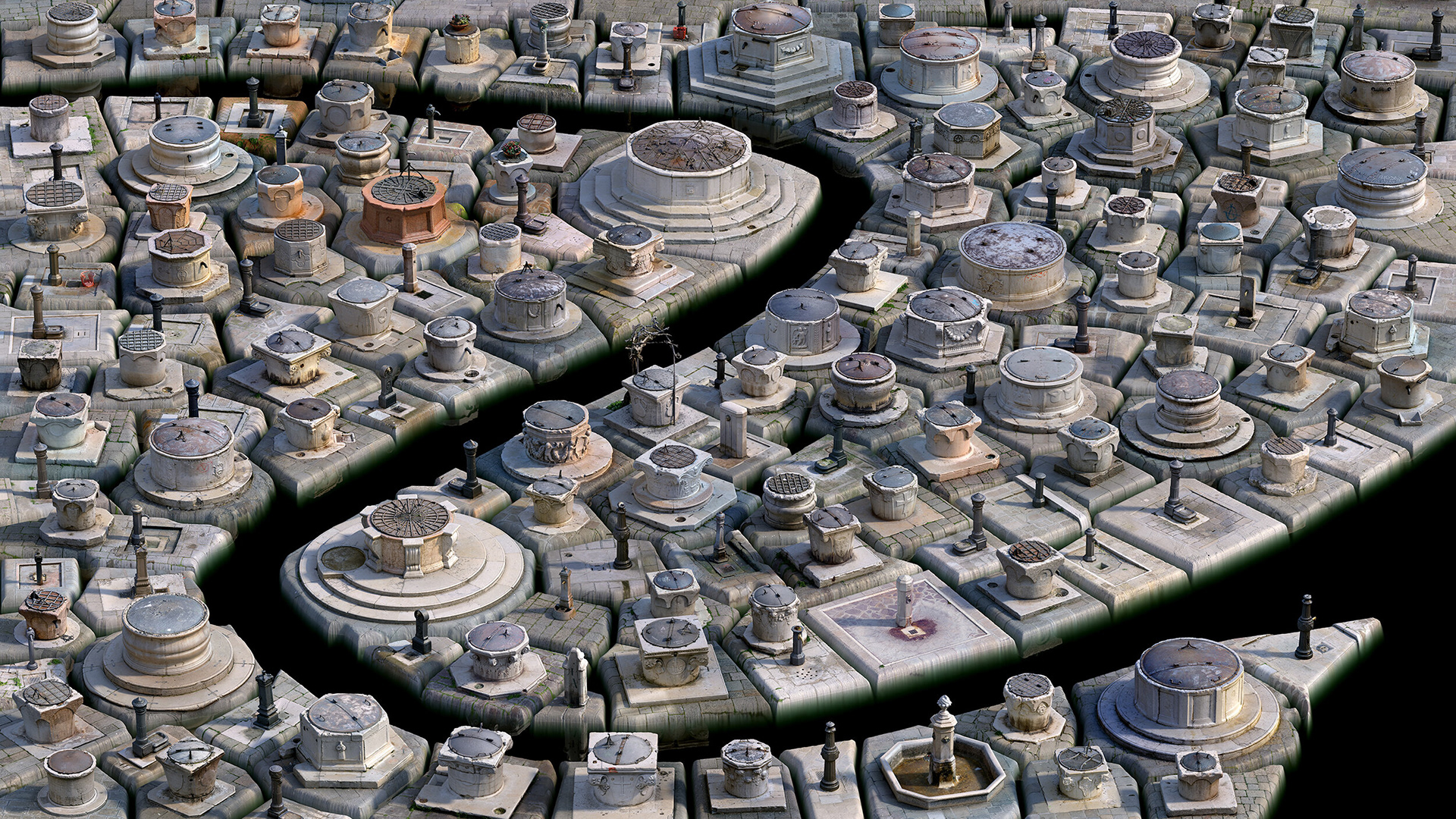
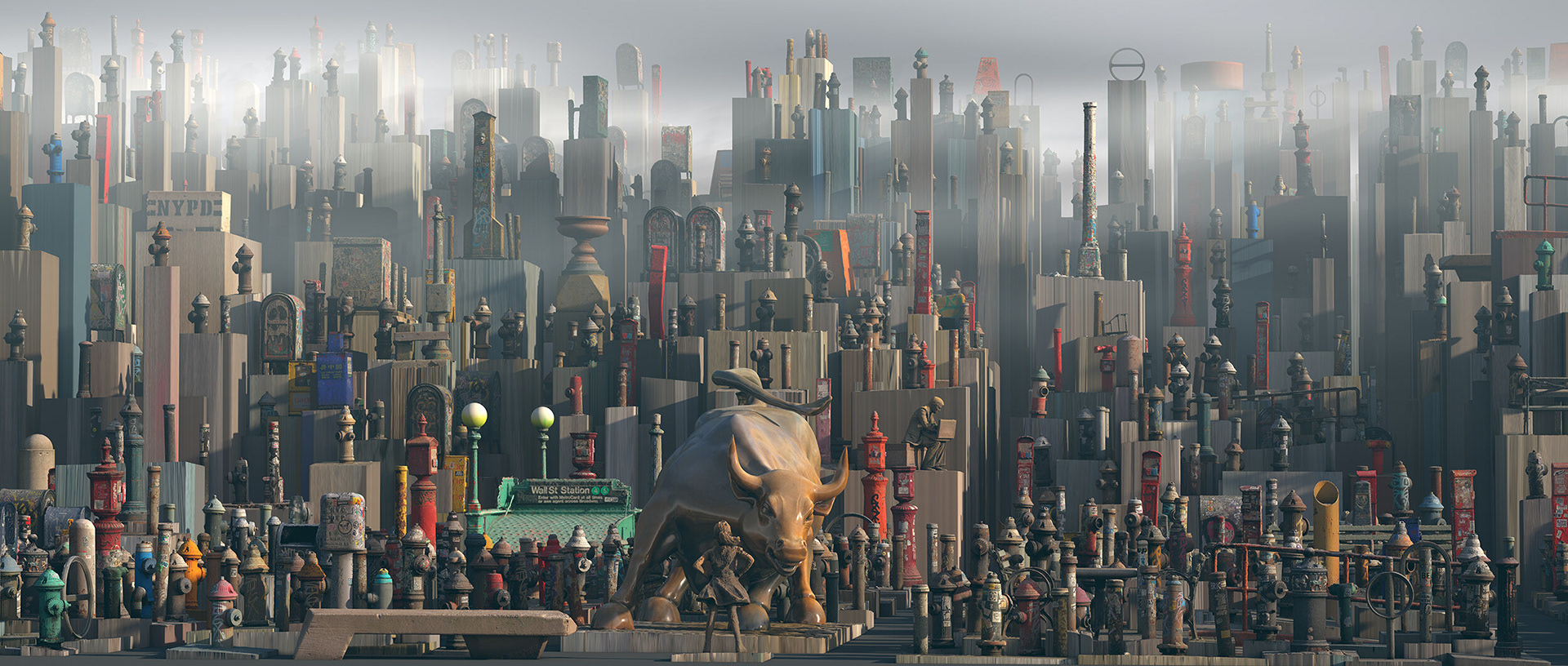
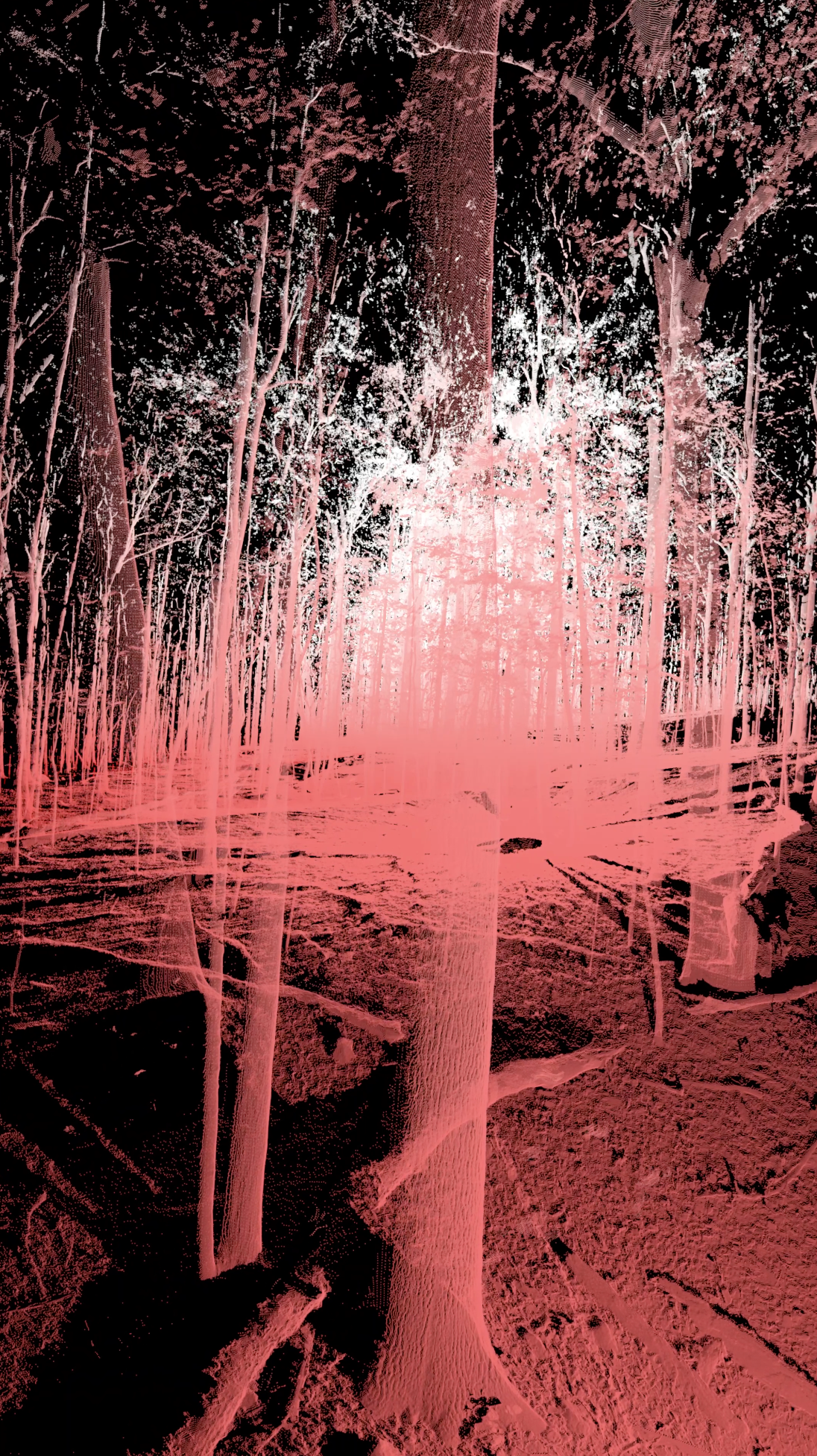
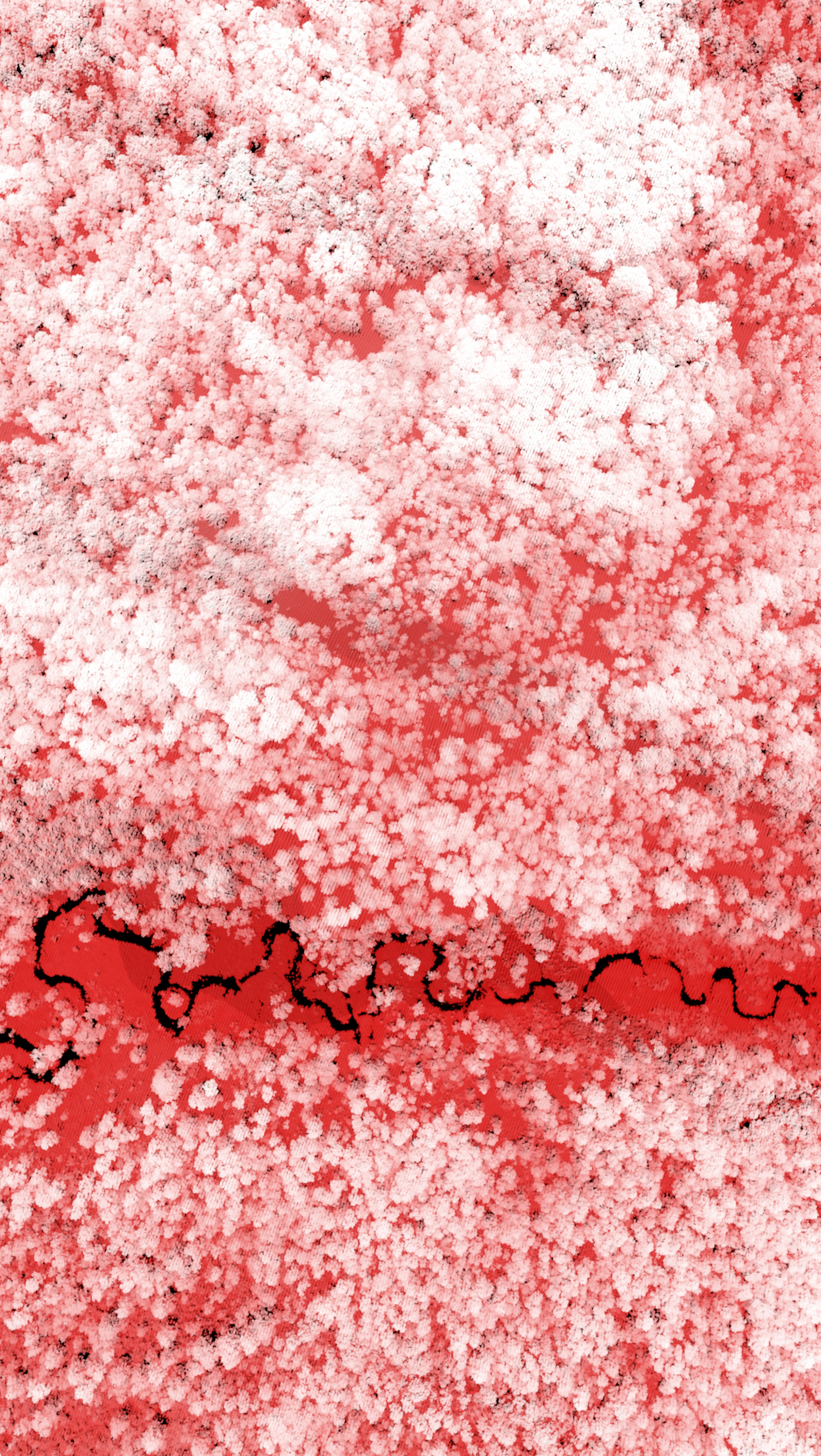
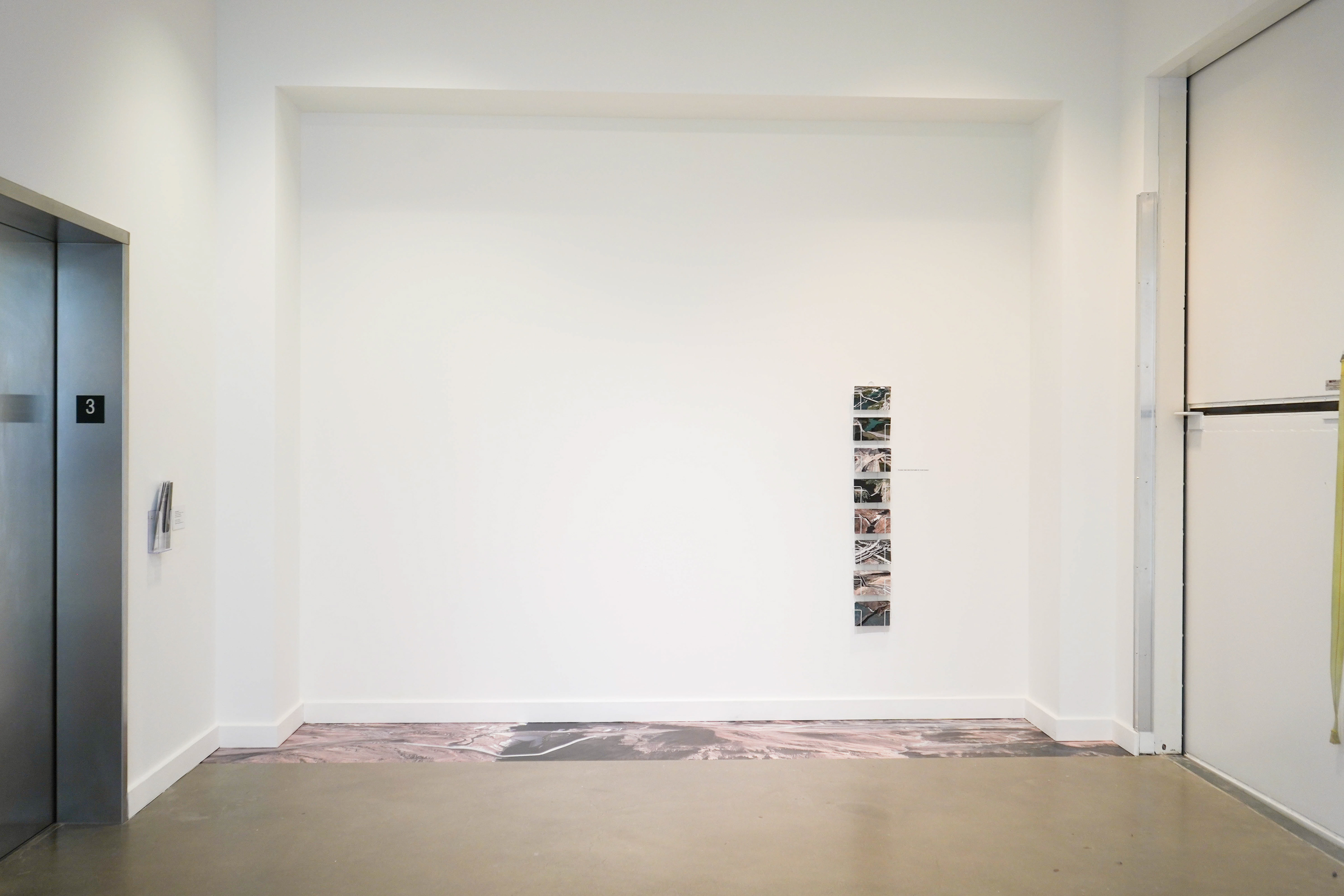
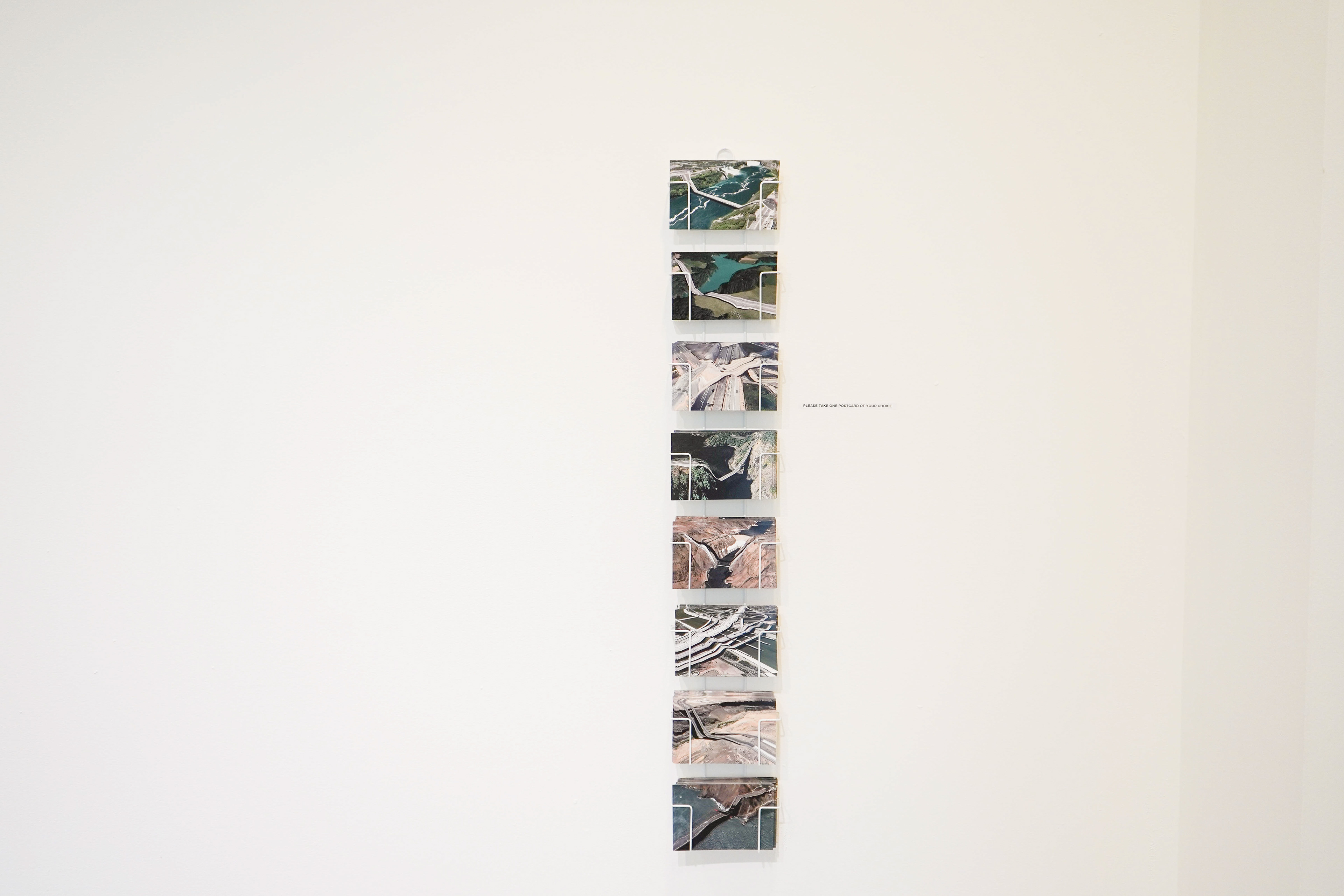
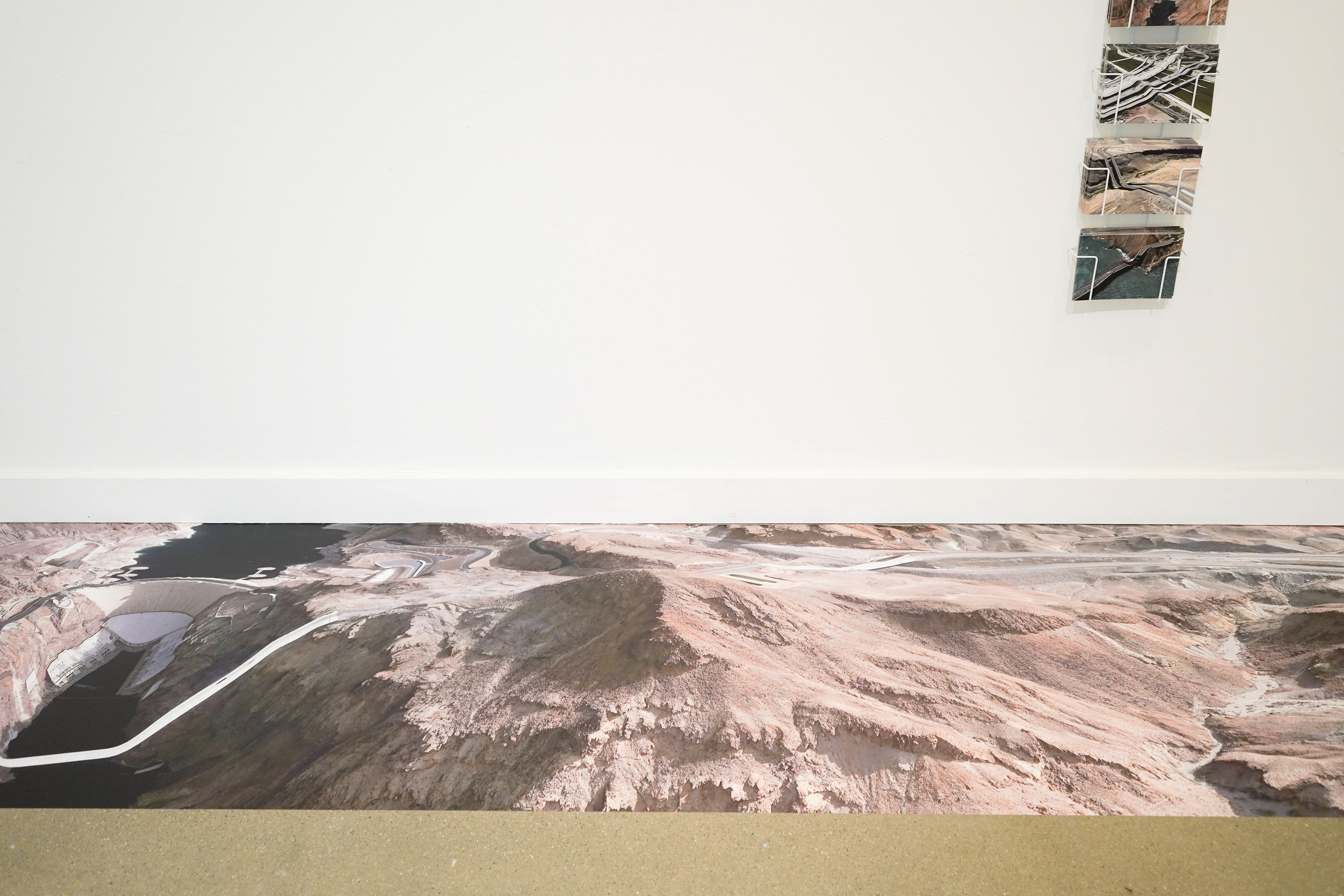
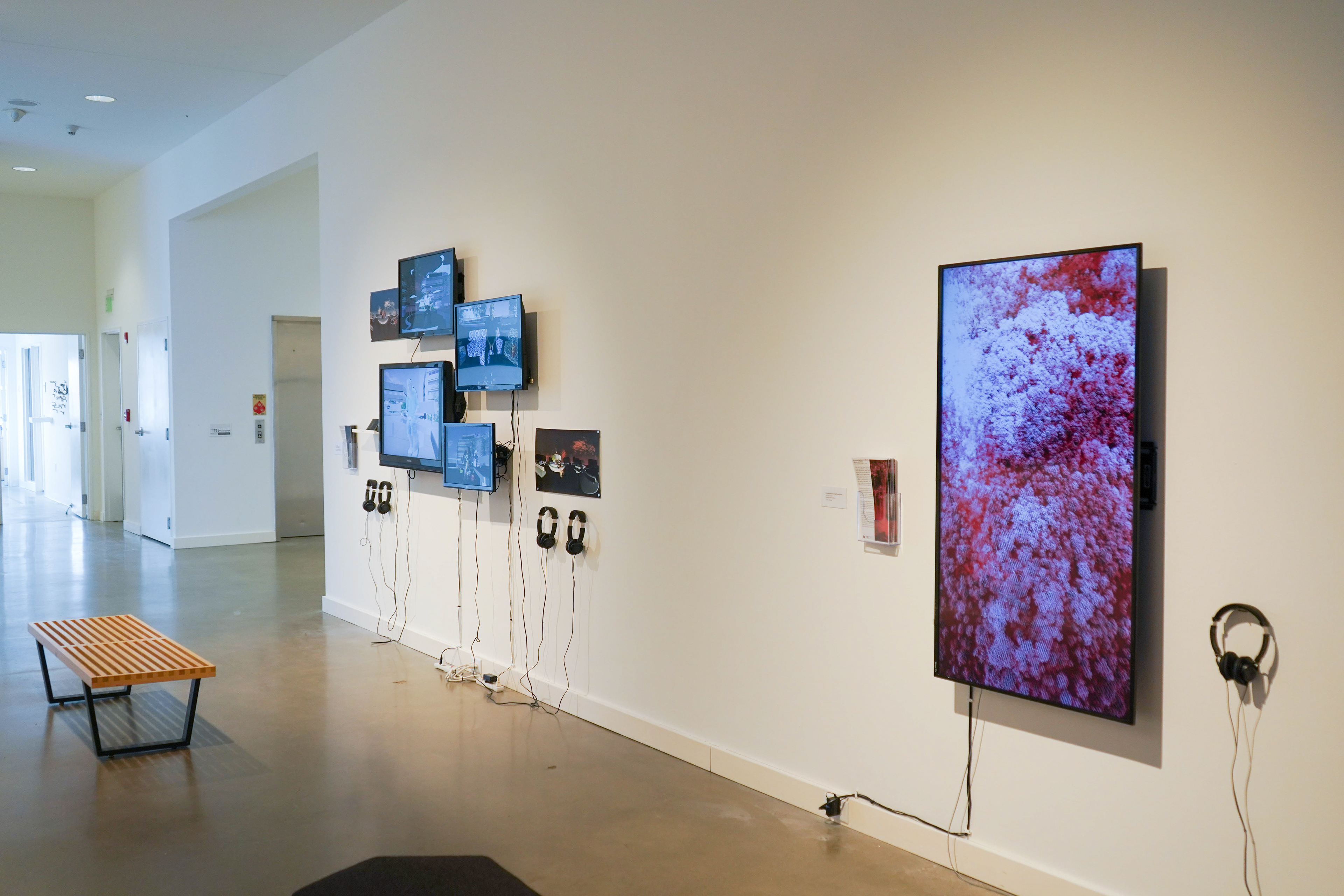
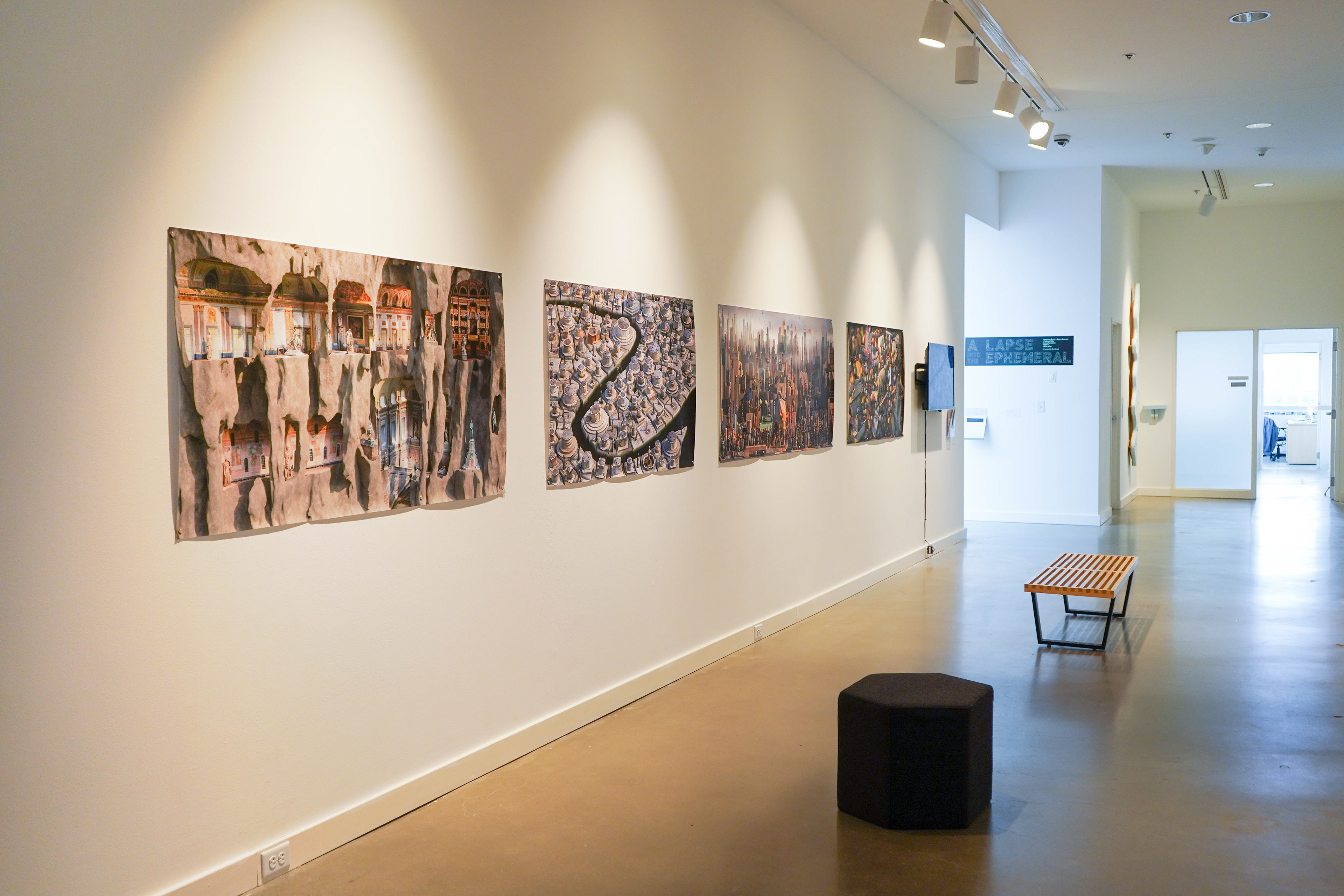
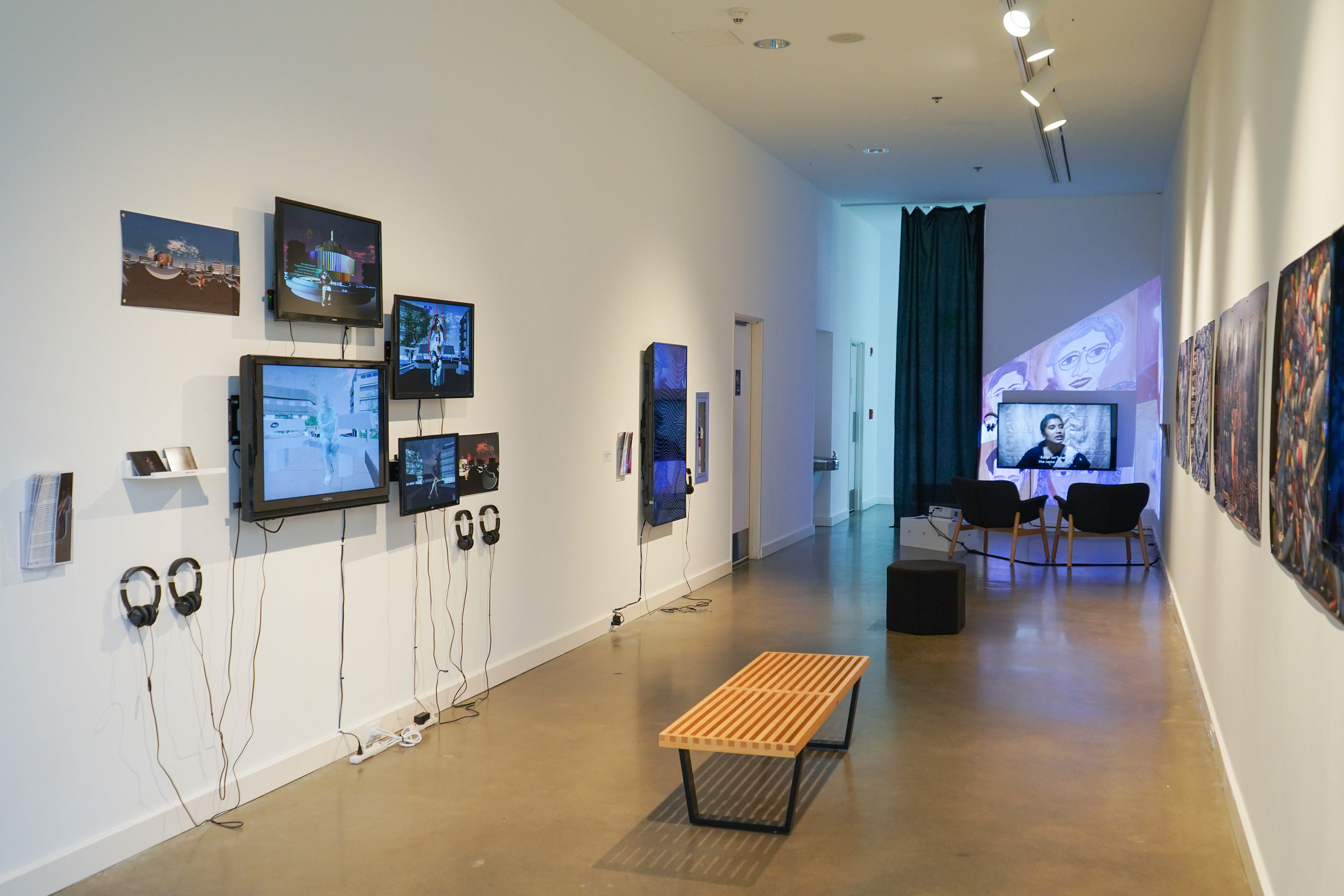
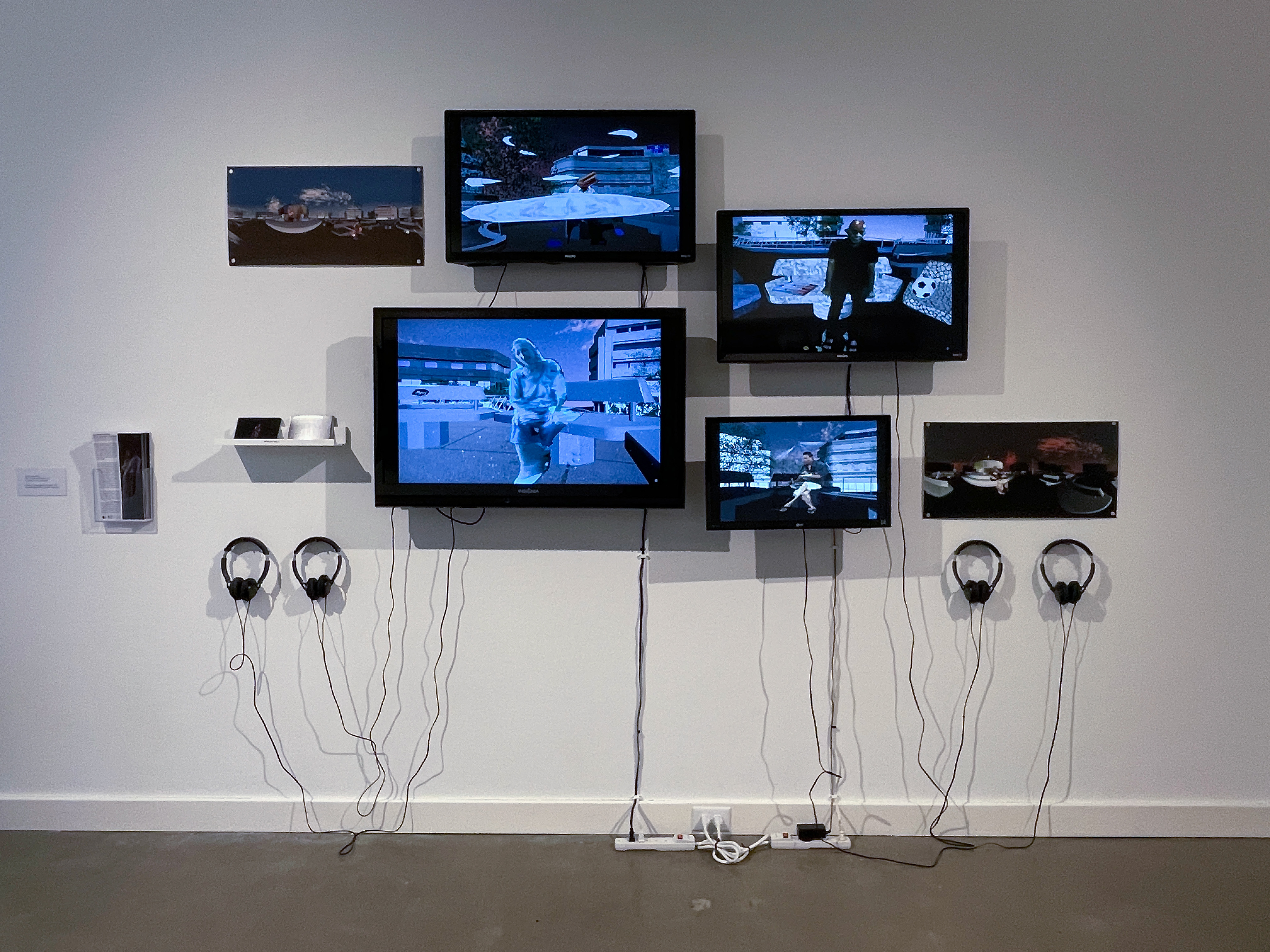
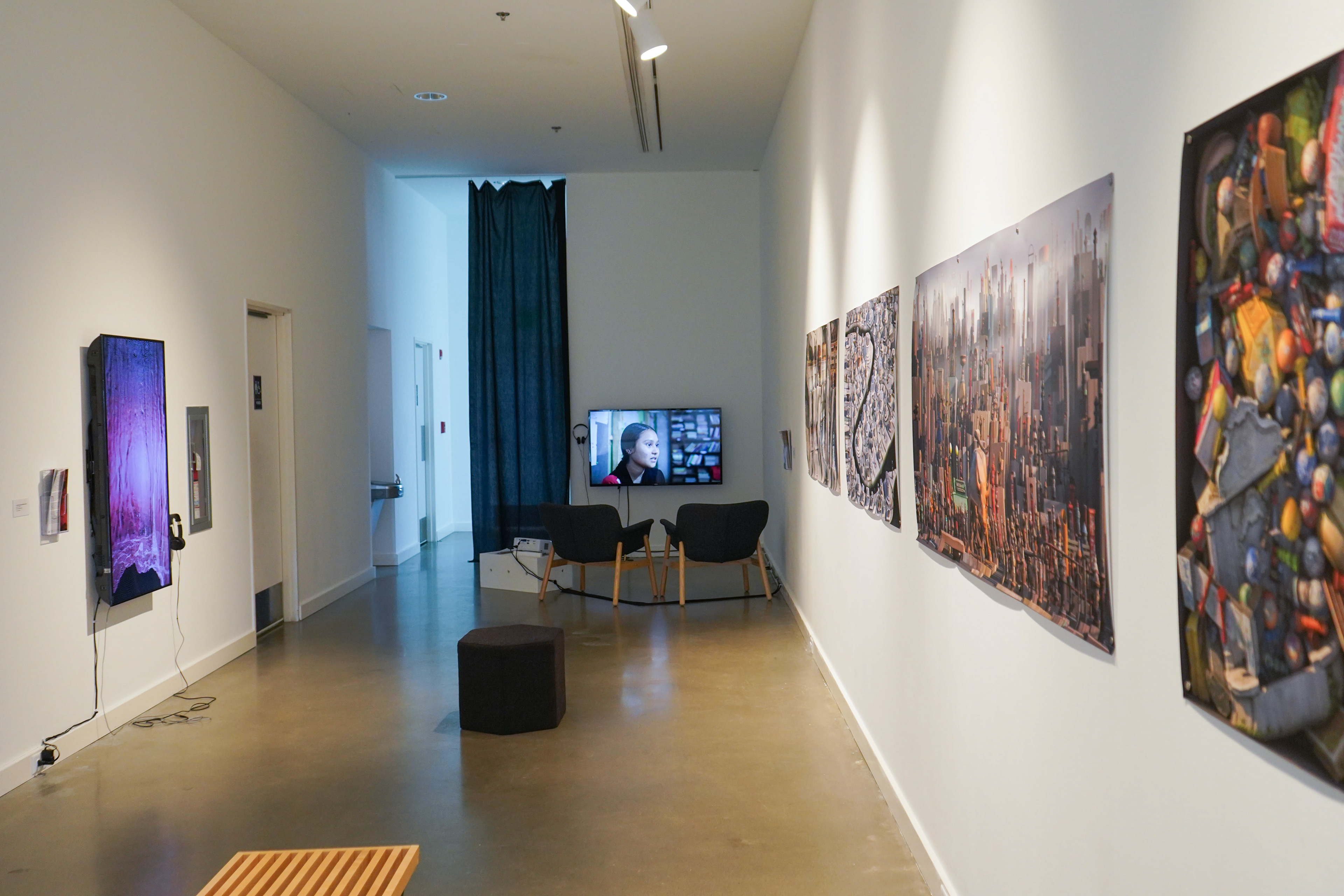
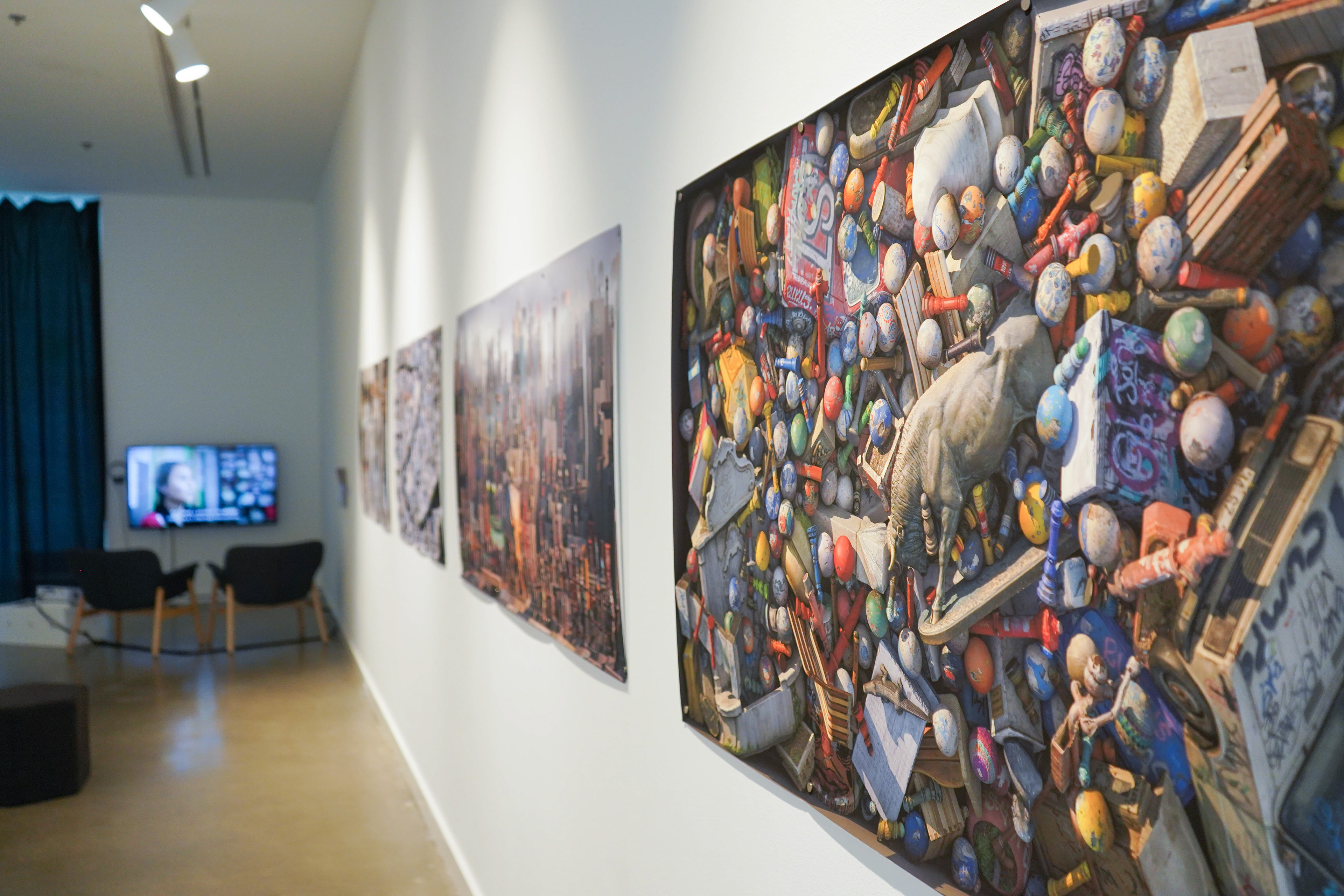
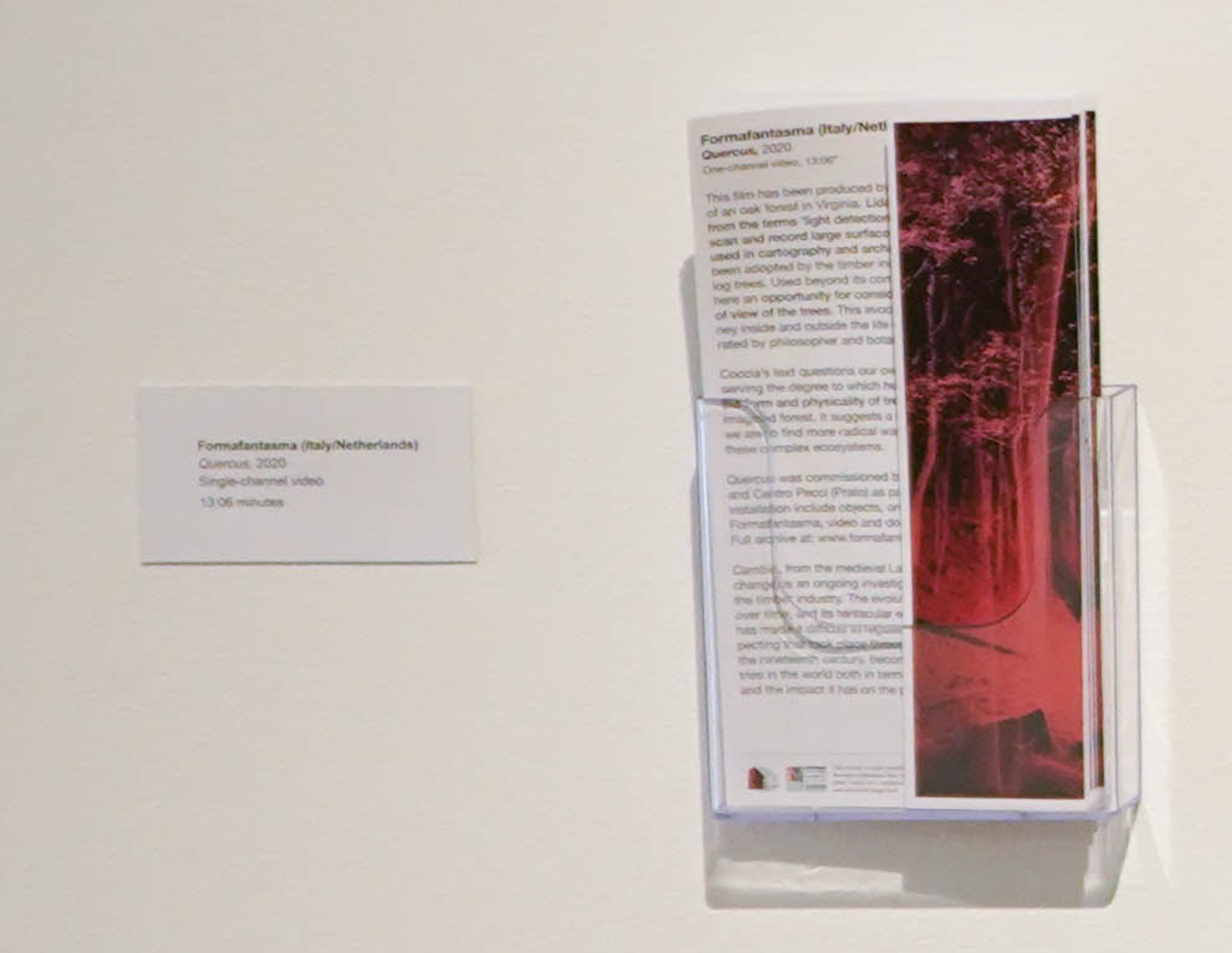
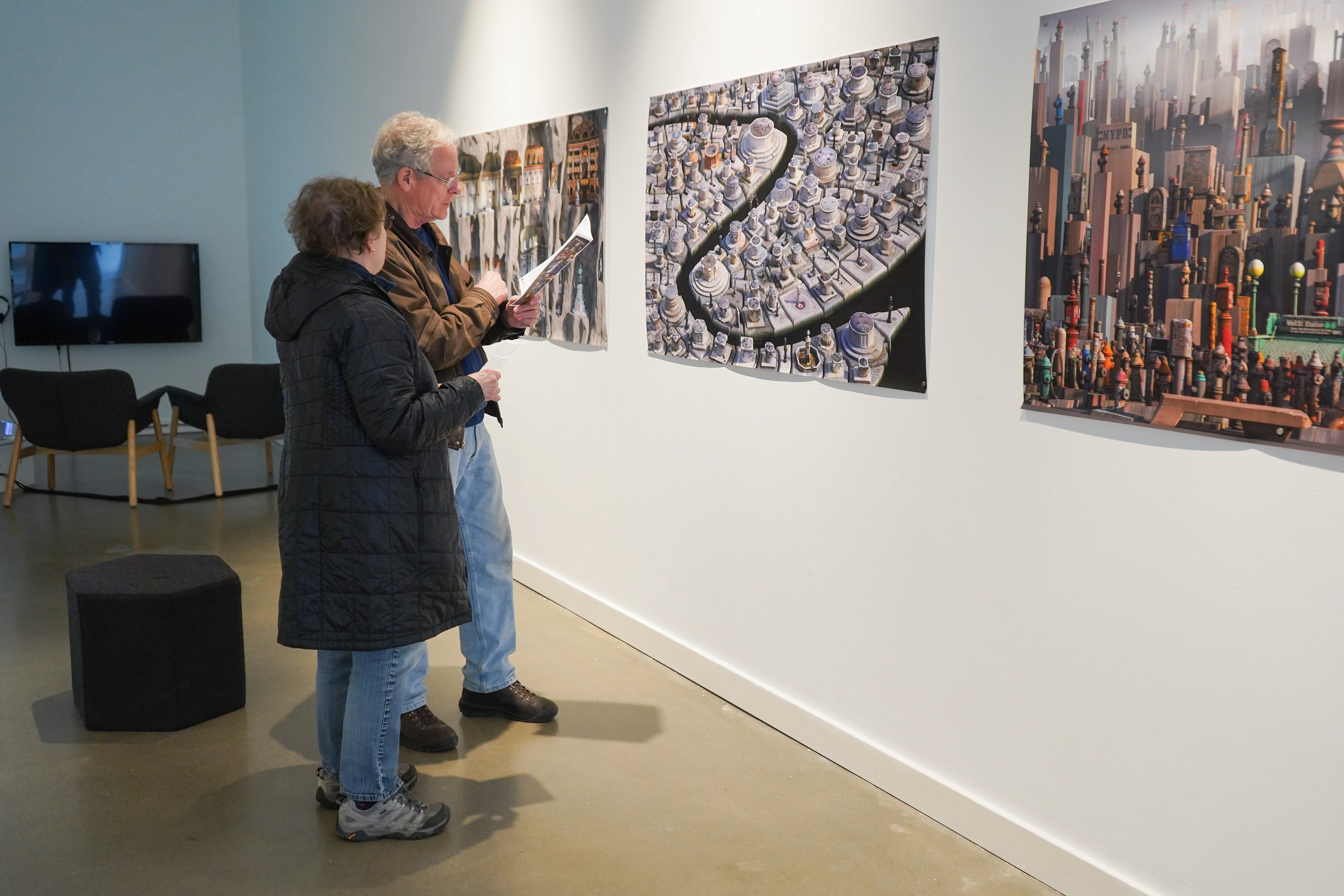
Documentation by Kali Morrison
Programs related to the exhibition
Virtual panel discussion with shirin anlen & Clement Valla
Clement Valla is a New York based artist whose work considers how humans and computers are increasingly entangled in making, seeing and reading pictures.
shirin anlen is a creative technologist, researcher and artist based in New York. Her work explores the societal implications of emerging technology, with a focus on internet platforms and artificial intelligence. She is the Media Technologist at WITNESS’s Technology Threats and Opportunities program, where she investigates the impact of deepfakes, media manipulation, media forensics, content authenticity and cryptography practices in the space of human rights violations.